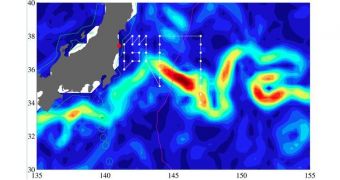The Fukushima Daiichi nuclear accident was one of the worst in history. Radioactive particles escaped from reactors at the power plant, and contaminated both portions of Japan and the Pacific Ocean. A new study now shows the extent of the devastation inflicted on the ocean.
Led by experts at the Woods Hole Oceanographic Institution (WHOI), an international group of investigators featuring 17 scientists and support personnel from 8 research institutions spent a total of 15 days at sea in June 2011. They took water samples, and looked for signs of radiations.
Their goal was to study the amount, spread and impact of the radiations the seaside nuclear power plant released after its reactors exploded. The accident was caused by a massive earthquake and tsunami, which struck the installation on March 11, 2011.
Throughout their scientific cruise, investigators collected water samples and marine organisms, which they then analyzed in detail. The area they covered stretched all the way to the boundaries of the exclusion zone Japanese authorities draw around the power plant.
WHOI marine chemist Ken Buesseler, the senior scientist on the expedition, discovered that concentrations of several key radionuclides (key radioactive chemicals) were well above allowed levels in numerous areas of the Pacific.
However, the team could not extract a pattern on how these compounds spread. Their concentrations varied widely even between neighboring zones. The team believes that these discoveries reflect the tremendously complex nature of the marine environment and its interactions.
A paper detailing the entire study was published in the April 2 online issue of the esteemed journal Proceedings of the National Academy of Sciences (PNAS), Science Daily reports.
“Our goal was to provide an independent assessment of what the Japanese were reporting and also to get further off shore to sample in places where we thought the currents would be carrying most of the radionuclides,” Buesseler reveals.
“We also wanted to provide as wide ranging a look as possible at potential impacts on the marine system to give a better idea of what was going on in the region, but also to provide a stronger baseline from which to measure future changes,” he concludes.

 14 DAY TRIAL //
14 DAY TRIAL //